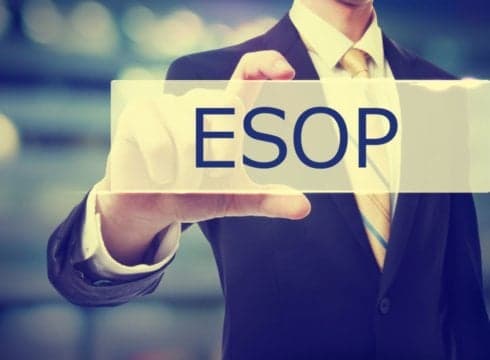Accel Partners’ Chief People Officer Narayan Thammaiah Shares Best Practices For Startups To Structure ESOPs And For Employees to Exercise Them
Inc42 Daily Brief
Stay Ahead With Daily News & Analysis on India’s Tech & Startup Economy
From the time SoftBank chief Masayoshi Son inadvertently announced the Flipkart-Walmart deal, employee stock option plan (ESOPs) — specifically the money Flipkart’s former and current employees will make — have been the talk of the town.
ESOPs are a good way for startups to hire and retain valuable employees, but often startup founders are at their wits end trying to figure out the best way to structure ESOPs and leverage them while building teams.
To make the job easier, Let’s venture, a platform for angel investing and startup fundraising had a chat with Narayan Thammaiah, Chief People Officer at venture capital firm Accel Partners. In this podcast, Narayan explains how ESOPs work and details the best practices for companies to structure their stock options. He also tells employees how they can evaluate their ESOPs.
Narayan defines ESOPs as one of the components that organisations — both startups and established ones — use to attract and retain talent. He says its part of a company’s “compensation philosophy” — while some startups leverage ESOPs, especially when they are building the company, others don’t.
On being asked how startups can work out the vesting period for stock options, he explained that there are many attributes of ESOPs, and “the more creative an organisation can be, the easier it will be for them to attract and retain talent.” He adds another thumb rule, “If you want to have an engaged employee who wants to be wealthy, that means you have to have a very aggressive ESOP.”
That aside, he added that an employee is given stock options commensurate with his/her tenure and the options could range anywhere between one year for performance units to four years for cliff vesting/linear vesting methods, or it could even be five years. The vesting can be decided based on what component of options the company is offering.
When asked about how to achieve a balance between the cliff period and the vesting period and the risks of an employee leaving early in case of pre-vested ESOPs, Narayan says, “Pre-vesting of options might walk on a very thin line on the (corporate) governance piece, and the date of joining of an employee is a very important component of an ESOP. Hence, in anything forward-looking it would be important to ensure that the vesting starts from the date of joining.”
Best Practices to Build an Effective ESOP
Narayan also shares some best practices for startup founders to build an attractive and effective ESOP. He says startups may make some decisions related to ESOPs during the formation or early stages, but the pattern needs to evolve during the course of its journey as it goes towards the validation or growth stages.
“In the formation stage, you’ll probably have to attract 5-10 people who will be your early employees. Considering that they are taking a huge amount of risk by joining you, you need to compensate them through ESOPs in a much more rewarding manner than you would do in the growth stage,” says Narayan. He adds the most important thumb rule is — you should know what your equity pool is and identify what part of it you’re going to earmark for employee options.
As you move on to the validation stage, your ability to offer compensation will increase and your ability to offer equity will decrease, considering you’ve had investors come on board and hired employees.
“So you need to model it (ESOPs) around the formation, validation, and growth phases — basically give an early employee a bigger share of equity during formation, a moderately big share in the validation phase, and a slightly smaller share in the growth stage,” he added.
So, in essence, ESOPs should be structured around three things — the stage of the startup, the contribution of the employee, and his/her compensation package, while keeping an eye on the equity pool.
When Should an Employee Exercise His/Her ESOPs
Narayan also explains what is the right time for employees to exercise their ESOPs. “If you have your unit at zero price, an employee doesn’t have to pay any prerequisite value of tax and can keep it for as long as he/she wants. As and when it rises to INR 100, 200, or 300 per unit, the tax bracket would kick in, which means an employee will have to buy them the day he/she leaves the company, to make sure that he/she holds the stock units until the next strategic buyout happens through an IPO or through a secondary sale,” says Narayan.
The best practice he recommends for employees is to have three-six months to exercise vested stock options and buy them from the company. In case the employee is not really interested, the stock options will be forfeited at the end of 90-day-period and once he/she buys in, it’s going to be available for the next 10 years, he adds.
This podcast was hosted by Let’s Venture, a platform for angel investing and startup fundraising.
{{#name}}{{name}}{{/name}}{{^name}}-{{/name}}
{{#description}}{{description}}...{{/description}}{{^description}}-{{/description}}
Note: We at Inc42 take our ethics very seriously. More information about it can be found here.


